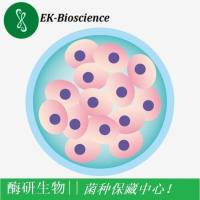Study of GPCRProtein Interactions by BRET
互联网
1232
Bioluminescence resonance energy transfer (BRET) has become an extremely valuable technology for the real-time study of protein–protein interactions in live cells. This technique is highly amenable to the monitoring of G protein-coupled receptor (GPCR)–protein interactions, especially involving scaffolding, regulatory and signaling proteins, such as β-arrestins, which are now known to have significant roles in addition to receptor desensitization. The BRET procedure utilizes heterologous coexpression of fusion proteins linking one protein of interest (e.g. a GPCR) to a bioluminescent donor enzyme, a variant of Renilla luciferase, and a second protein of interest (e.g. β-arrestin) to an acceptor fluorophore. If in close proximity, energy resulting from the rapid oxidation of a cell-permeable coelenterazine substrate by the donor will transfer to the acceptor, which in turn fluoresces at a longer characteristic wavelength. Therefore, the occurrence of such energy transfer implies that the proteins of interest fused to the donor and acceptor interact directly or as part of a complex. BRET detection can be carried out using scanning spectrometry or dual-filter luminometry. The latest improvements in BRET methodology have enabled live cell drug screening as well as monitoring of previously undetectable protein-protein complexes, including constitutive GPCR/β-arrestin interactions. Therefore, BRET is likely to play an increasingly important role in GPCR research and drug discovery over the coming years.






